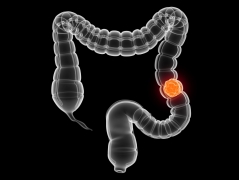Polyps that are harmless are termed as hyperplastic polyps. Hyperplastic polyps are very typical, but it’s difficult to differentiate them from pre-cancerous, or adenomatous, polyps. Adenomatous polyps take a while, usually years, to turn into digestive system cancer—but their existence in the digestive system is a strong signal that a individual might have or will create melanoma of the digestive system. Generally, bigger polyps are more likely to be risky than small ones.
Colon polyps are more typical in people older than 50 years old. Colonoscopy professionals suggest regular  melanoma of the digestive system tests after this age, especially for sufferers who have a record of colon cancer in their loved one’s record or have developed polyps in other parts of their systems. If you have had polyps in your digestive system before, your chance of creating others there also improves. Discuss to one of our professionals if you feel that you need follow-up examining.Unfortunately, there are very few symptoms of digestive system polyps noticeable without a digestive system examining test. Physicians usually discover them during techniques such as colonoscopy. Larger polyps can also be seen during a CT check out of the stomach. In some situations, however, an especially huge or problematic polyp might cause blood vessels loss from the anus or changes in a patient’s bowels. If you end up requiring to use the restroom more or less often than usually, or if you experience diarrhea or constipation, you may want to contact an professional to get out if you have digestive system polyps. Also consult someone if there is blood vessels or staining in your feces, as blood vessels in the feces is a sign of blood vessels loss along the digestive (GI) system.
melanoma of the digestive system tests after this age, especially for sufferers who have a record of colon cancer in their loved one’s record or have developed polyps in other parts of their systems. If you have had polyps in your digestive system before, your chance of creating others there also improves. Discuss to one of our professionals if you feel that you need follow-up examining.Unfortunately, there are very few symptoms of digestive system polyps noticeable without a digestive system examining test. Physicians usually discover them during techniques such as colonoscopy. Larger polyps can also be seen during a CT check out of the stomach. In some situations, however, an especially huge or problematic polyp might cause blood vessels loss from the anus or changes in a patient’s bowels. If you end up requiring to use the restroom more or less often than usually, or if you experience diarrhea or constipation, you may want to contact an professional to get out if you have digestive system polyps. Also consult someone if there is blood vessels or staining in your feces, as blood vessels in the feces is a sign of blood vessels loss along the digestive (GI) system.
Polyp Elimination to Prevent Colon Cancer
If your doctor finds a polyp, there is no need to anxiety. A intestinal system polyp i s not always cancer. In fact, most remain harmless, or simple, and are eliminated before they present serious threats to the affected person. During a polypectomy (or a polyp removal), a doctor will access the individual’s digestive system using a lengthy, versatile device known as an endoscope or colonscope. If the recognized polyp is little enough, a reducing device can be placed through to cut away cells instantly. In situations where the polyp to too huge to do this, a round cable device known as a noose or a mistake is inserted. The physician will then cycle the cable around the huge polyp and press it until it burns off during a procedure known as cauterization. The procedure appears like a very little amputation, or a polyp biopsy, as the cautery method helps eliminate cells and stop post-procedural blood vessels loss.
s not always cancer. In fact, most remain harmless, or simple, and are eliminated before they present serious threats to the affected person. During a polypectomy (or a polyp removal), a doctor will access the individual’s digestive system using a lengthy, versatile device known as an endoscope or colonscope. If the recognized polyp is little enough, a reducing device can be placed through to cut away cells instantly. In situations where the polyp to too huge to do this, a round cable device known as a noose or a mistake is inserted. The physician will then cycle the cable around the huge polyp and press it until it burns off during a procedure known as cauterization. The procedure appears like a very little amputation, or a polyp biopsy, as the cautery method helps eliminate cells and stop post-procedural blood vessels loss.
There are no sensors receptors within the digestive system, so the polypectomy itself is a almost pain-free procedure. However, sufferers are still required to be sedated in order for the colonoscope or endoscope to be placed.